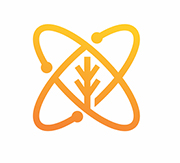- 01
- 02
- 03



Aave lending represents a revolutionary approach to decentralized finance, enabling users to participate as lenders or borrowers without traditional intermediaries. This protocol operates on blockchain technology, primarily Ethereum, creating transparent financial markets. The core innovation of aave lending lies in its liquidity pools, where users deposit digital assets to earn interest while borrowers access these funds using crypto collateral. Unlike conventional systems, aave lending eliminates credit checks through over-collateralization mechanisms, making global financial services accessible. The algorithmic interest rate model within aave lending dynamically adjusts based on real-time supply and demand, optimizing capital efficiency. This system forms the backbone of permissionless finance where anyone can engage in aave lending activities.
Originally launched as ETHLend in 2017, the project rebranded to Aave (meaning "ghost" in Finnish) in 2020, signaling its evolution into a more sophisticated aave lending protocol. The transformation introduced pooled liquidity instead of peer-to-peer loans, significantly enhancing the scalability of aave lending. This shift allowed the aave lending platform to support instant loan approvals and innovative features like flash loans. The governance token, AAVE, empowers holders to vote on protocol upgrades, ensuring the continuous development of aave lending services. Today, aave lending operates across multiple blockchain networks, expanding its reach beyond Ethereum to Polygon, Avalanche, and Optimism.
At the heart of aave lending functionality are smart contracts that automate every transaction. When users deposit assets like ETH or USDC into aave lending pools, they receive aTokens – interest-bearing tokens that represent their deposit and accrued earnings. These aTokens automatically compound interest every Ethereum block (approximately every 15 seconds), making aave lending highly efficient for yield generation. For borrowers, aave lending requires collateralization exceeding the loan value, with Loan-to-Value (LTV) ratios varying by asset volatility. The health factor metric in aave lending constantly monitors positions, triggering automatic liquidation if collateral values drop below safety thresholds.
Aave lending employs dual interest rate models: stable rates for predictable payments and variable rates that fluctuate with market conditions. This flexibility distinguishes aave lending from competitors, allowing borrowers to switch between models without refinancing costs. The algorithm behind aave lending interest considers utilization rates – the percentage of deposited funds currently borrowed. When pool utilization exceeds optimal thresholds, aave lending automatically increases rates to incentivize more deposits and discourage additional borrowing. This self-regulating mechanism ensures liquidity stability within the aave lending ecosystem.
Risk management in aave lending involves carefully calibrated collateral parameters. Each supported asset has specific LTV ratios, liquidation thresholds, and liquidation penalties. For example, stablecoins might have 75% LTV while volatile assets like ETH maintain 70% LTV in aave lending pools. The protocol's liquidation process involves incentivized liquidators who repay portions of undercollateralized loans in exchange for discounted collateral. This design protects lenders in the aave lending system while giving borrowers buffer zones before liquidation. Additionally, aave lending allows borrowers to use multiple asset types as collateral, increasing capital efficiency.
Aave lending introduced groundbreaking concepts to DeFi, most notably flash loans – uncollateralized loans that must be repaid within a single blockchain transaction. These enable sophisticated arbitrage, collateral swapping, and self-liquidation strategies within aave lending. Another innovation is credit delegation, where depositors can delegate their credit lines to trusted borrowers without locking collateral. The aave lending protocol also features rate switching, allowing borrowers to toggle between stable and variable rates based on market conditions. These capabilities demonstrate how aave lending pushes boundaries in programmable finance.
The aToken system revolutionizes yield distribution in aave lending. Unlike traditional savings accounts where interest compounds periodically, aTokens in the aave lending ecosystem accrue value continuously. Each aToken corresponds 1:1 with the underlying asset (e.g., aUSDC for USDC deposits), with balances increasing in real-time as interest accumulates. This design allows seamless integration with other DeFi protocols since aTokens can be utilized as collateral elsewhere while still earning aave lending yields. The composability of aTokens exemplifies how aave lending creates synergistic financial legos within the broader DeFi landscape.
Decentralized governance is fundamental to aave lending evolution. AAVE token holders propose and vote on protocol upgrades, new asset listings, and risk parameter adjustments. The aave lending ecosystem also incorporates multiple security layers, including a decentralized Safety Module where stakers backstop shortfall events in exchange for rewards. Furthermore, aave lending utilizes Chainlink oracles for reliable price feeds and has undergone extensive smart contract audits. These features collectively enhance the resilience of aave lending operations against market volatility and potential exploits.
Lenders in aave lending enjoy passive income streams with typically higher yields than traditional finance, accessible 24/7 without minimum deposit requirements. The automated nature of aave lending eliminates manual reinvestment – interest compounds continuously within the protocol. For borrowers, aave lending provides instant liquidity without selling assets, enabling tax-efficient access to capital. The permissionless design means global participation in aave lending markets, particularly benefiting unbanked populations. Additionally, aave lending offers transparency impossible in traditional systems: all transactions, interest calculations, and protocol reserves are publicly verifiable on-chain.
Aave lending optimizes capital utilization through features like collateral swapping and debt refinancing. Users can seamlessly switch collateral types without closing positions, adapting to changing market conditions. The ability to borrow multiple assets against single collateral deposits enhances flexibility in aave lending strategies. Moreover, the protocol's integration with Layer 2 solutions reduces transaction costs, making smaller aave lending operations economically viable. These efficiencies position aave lending as a sophisticated alternative to conventional lending systems.
Despite innovations, aave lending carries inherent risks. Smart contract vulnerabilities represent potential attack vectors, though extensive auditing and bug bounties mitigate this. Market volatility can trigger liquidations if collateral values plummet rapidly. The aave lending protocol employs safeguards like health factor monitoring and liquidation penalties, but users must actively manage positions. Interest rate fluctuations in variable-rate aave lending loans could increase borrowing costs unexpectedly. Additionally, regulatory uncertainty surrounds decentralized protocols like aave lending in various jurisdictions. Participants should thoroughly understand these dynamics before engaging with aave lending services.
Prudent risk management in aave lending involves maintaining health factors significantly above 1.0, providing buffers against market swings. Diversifying collateral types reduces exposure to single-asset volatility. Setting up automated monitoring tools for aave lending positions can alert users before liquidation thresholds are breached. Some participants use hedging strategies or insurance protocols to protect against aave lending liquidation scenarios. Understanding each asset's specific parameters within aave lending pools is crucial for risk-aware participation.
The aave lending roadmap includes expanding into real-world assets (RWA), bridging DeFi with traditional finance. Proposals suggest incorporating tokenized mortgages and corporate credit into aave lending pools. Enhanced cross-chain functionality will further unify liquidity across networks. The aave lending protocol is also developing improved risk assessment frameworks using on-chain reputation systems. Upcoming governance proposals may introduce delegated credit scores for trusted borrowers, potentially enabling undercollateralized loans within aave lending. These innovations could dramatically expand aave lending's market reach and utility.
To address Ethereum's congestion and high fees, aave lending increasingly deploys on Layer 2 networks. The Polygon integration already demonstrates how aave lending can achieve near-instant transactions at minimal cost. Future implementations may leverage zk-rollups or optimistic rollups to enhance aave lending scalability without compromising security. These developments will make aave lending accessible to broader audiences, particularly for smaller transactions where Ethereum mainnet fees prove prohibitive. The multi-chain strategy ensures aave lending remains competitive in the evolving DeFi landscape.
Aave lending fundamentally differs from banks through disintermediation – no central entity controls funds or sets arbitrary terms. Interest rates in aave lending are algorithmically determined by supply/demand dynamics rather than central bank policies. Settlement occurs instantly on-chain in aave lending, unlike traditional systems requiring business days for clearance. While banks operate within jurisdictional boundaries, aave lending provides global access with uniform rules. The transparency of aave lending contrasts with opaque traditional loan books. However, aave lending currently lacks fiat integration and deposit insurance schemes common in conventional finance.
As decentralized finance grows, regulatory frameworks for protocols like aave lending continue evolving. Current discussions focus on distinguishing true DeFi from centralized intermediaries while addressing concerns about illicit finance. The aave lending protocol's non-custodial nature presents regulatory challenges since no central party controls user funds. Future compliance mechanisms might involve privacy-preserving KYC options at the interface level without compromising aave lending's core decentralization. These developments will significantly influence how aave lending integrates with the broader financial system.
Beyond simple borrowing and lending, aave lending enables sophisticated financial strategies. Traders utilize flash loans for arbitrage across exchanges. DAOs leverage aave lending for treasury management, earning yield on idle assets. Real estate investors use aave lending to access liquidity without property sales. Crypto holders employ aave lending to generate income from long-term holdings. The flexibility of aave lending also supports innovative use cases like undercollateralized loans through credit delegation. These diverse applications demonstrate how aave lending transcends traditional finance paradigms.
Growing institutional interest in aave lending reflects DeFi's maturation. Hedge funds utilize aave lending for leveraged strategies and efficient capital deployment. Family offices allocate portions of portfolios to aave lending yields as uncorrelated returns. Corporations explore aave lending for working capital solutions using tokenized receivables as collateral. Custody solutions now support institutional participation in aave lending with enhanced security controls. This institutional influx brings greater liquidity and stability to aave lending markets while validating the protocol's robustness.
Participating in aave lending requires a Web3 wallet like MetaMask, funded with ETH for gas fees. Users connect to the aave lending interface, select their network (Ethereum, Polygon, etc.), and choose supply or borrow functions. When supplying assets to aave lending pools, carefully review asset-specific parameters like LTV and liquidation thresholds. Borrowers should maintain conservative health factors and monitor positions regularly. Beginners should start with small amounts in aave lending to understand mechanics before scaling operations. Numerous educational resources exist for mastering aave lending strategies and risk management techniques.
Experienced users maximize aave lending efficiency through techniques like yield farming with supplied assets, collateral rebalancing during market shifts, and strategic rate switching between stable/variable options. Some combine aave lending with other DeFi protocols – using borrowed funds for liquidity provision or staking elsewhere. Automated tools help optimize health factors and liquidation protection within aave lending positions. These advanced approaches require deeper understanding but demonstrate the sophisticated possibilities within the aave lending ecosystem.
Aave lending represents more than financial innovation – it embodies a paradigm shift toward open, transparent, and accessible finance. By removing geographic and socioeconomic barriers, aave lending empowers global financial inclusion. The protocol's composability fosters innovation as developers build new applications atop aave lending infrastructure. As decentralized governance matures, aave lending pioneers community-owned financial systems. While challenges remain, the continued evolution of aave lending points toward a future where financial services operate as public utilities rather than proprietary products.
Search on Youtube!adipiscingelit,sed do eiusmod tempor incididunt ut labore et dolore magn




adipiscingelit,sed do eiusmod tempor incididunt ut labore et dolore magn
adipiscing elit, sed do eiusmod tempor incididunt ut labore et dolore magn








adipiscing elit, sed do eiusmod tempor incididunt ut labore et dolore magn
Lorem ipsum dolor sit amet, consectetur adipiscing elit, sed do eiusmod tempor incididunt ut labore et dolore magna aliqua. Ut enim ad minim veniam, quis nostrud exercitation ullamco laboris nisi ut aliquip ex ea commodo consequat. Duis aute irure dolor in reprehenderit in voluptate velit esse cillum
Read More
It is a long established fact that a reader will be distracted by the readable content of a page when looking at its layout. The point of using Lorem

Lorem ipsum dolor sit amet, consectetur adipiscing elit, sed doLorem ipsum dolor sit amet, consectetur adipiscing elit, sed doLorem ipsum dolor sit amet,
Lorem ipsum dolor sit amet, consectetur adipi scing elit, sed doLorem ipsum dolor sit
Lorem ipsum dolor sit amet, consectetur adipiscing elit, sed doLorem ipsum dolor sit amet, consectetur adipiscing elit, sed doLorem ipsum dolor sit amet,